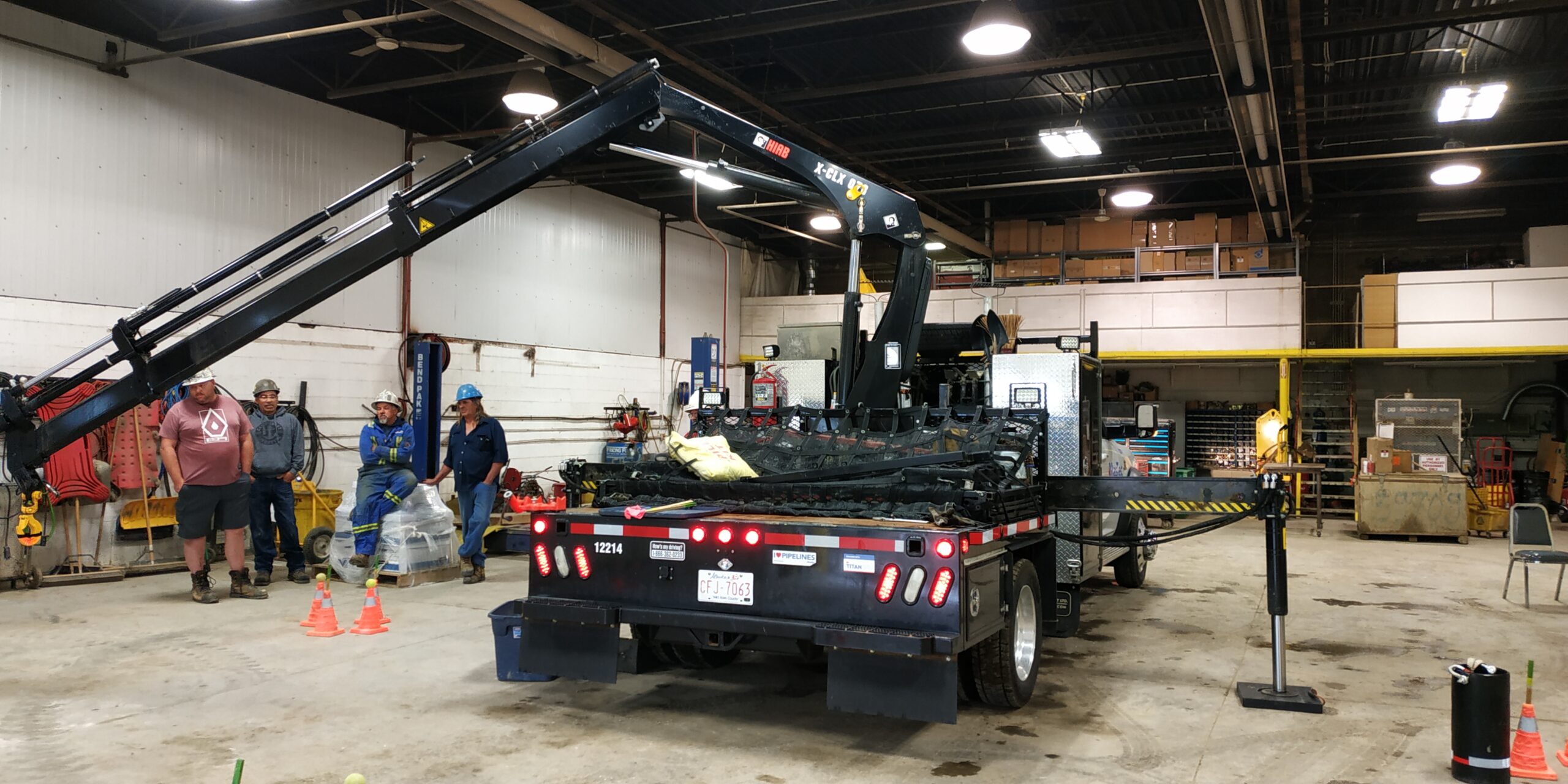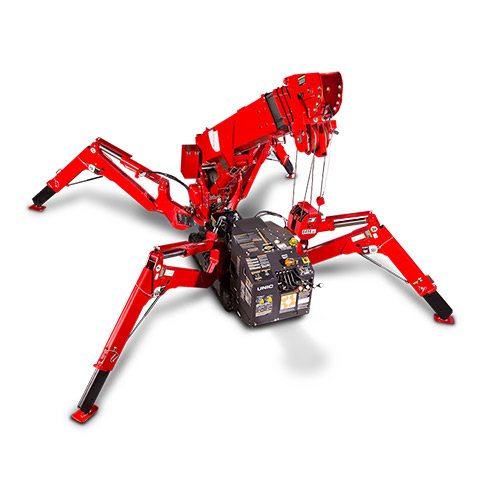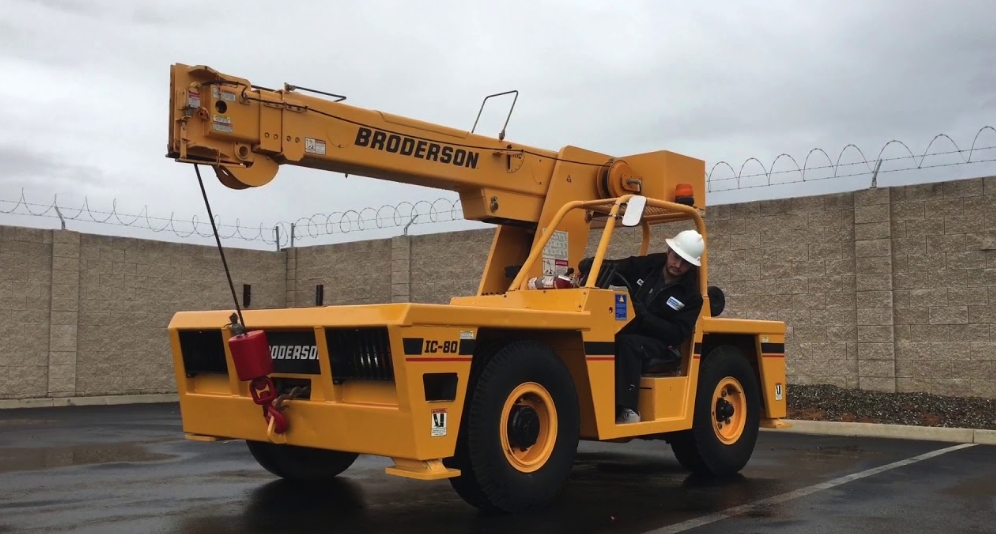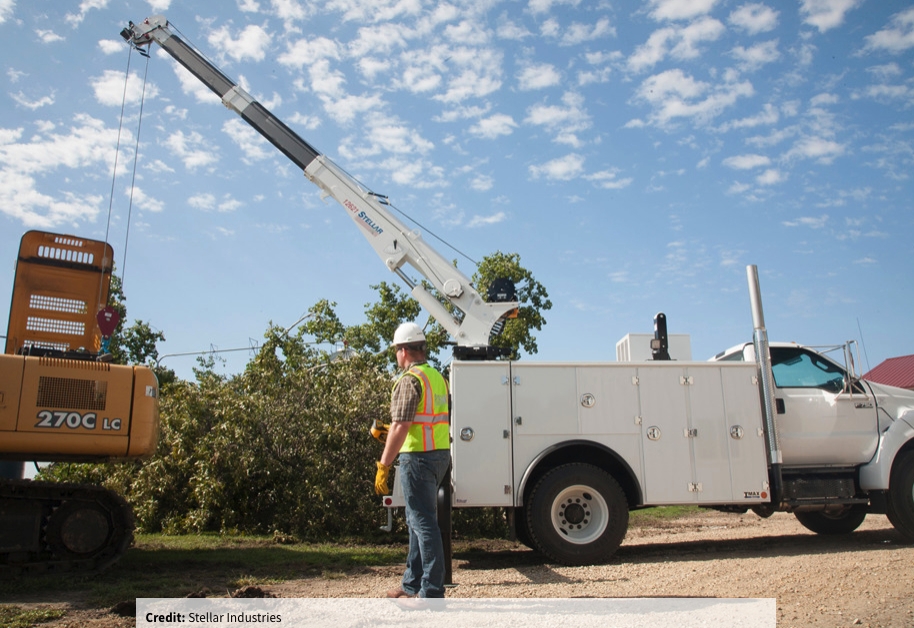If you work a lot by yourself, there should not be any argument at all. Your safety and the safety of anyone surrounding your crane is THE most important thing. Operating a crane remotely has all the advantages and more:

1. You are going (walking, never riding) with the load to it’s final spot. You have full control over the load and a clear view of where it needs to be. Thus ensuring true “safe” delivery of the load being handled. If anything were to happen to the crane truck by whatever means, you are not standing beside the truck, you are far enough away. Yes always take precautions, do site analysis, use proper stabilizer pads, test the ground for proper support prior, etc. BUT, given the knuckle booms cranes propensity for diversification, I’d rather be where the load is, not where the truck is for OPTIMUM control.

2. You are away from the crane truck. ALL remote controls now have the ability to shut down the crane in the event of a “situation” where full stop is necessary using the eSTOP or deadman button on each and every remote. There are 1000’s of cranes in use today with manual control stations that DO NOT have an ability to shut the crane down in an emergency, aside from opening the door of the truck, locating a PTO switch and or crane electric switch and hopefully shutting the crane down before anyone is seriously hurt or worse, in less than 5-seconds!
3. Operator CapAbility Using Remote Control:
- Start and Stop – Controlling the truck engine as far away as 100 Meters. The advantage is if the crane is kept on site for extended periods, the operator is up on a roof or in a building, he/she can shut the unit off until the job is complete and they are then able to return to the crane truck to make ready for road transport.
- Engine Throttle Control – Preset engine RPM for optimum flow control (More than the preset RPM and you are just burning fuel and creating unnecessary heat). Cranes operate better at maximum flow vs. at idle. There are also load-sensing pumps in use that will provide the automatic speed control of the engine as well.
- Pre-set Crane Speed – Choices for a full range of operators, from as slow as 25% of normal speed to 100% or full flow. Giving a broad range of control and training speeds for optimal load handling scenarios. The remote controls are fully proportional, meaning for every minor or major operator input on the levers, the same is given on the output of the crane.
- Boom Oscillation Control – Some manufacturers offer a feature available only with a remote control. The ability to balance the oscillations of the crane boom, meaning that even the poorest of operators will look like a pro as the crane automatically eliminates most of the “boom bounce” associated with less than stellar operator input. It’s actually a structural saver as well. A better description with video is available HERE.
- Stabilizer Control – While this sounds bad, in-fact, it’s far safer.. It requires the operator to switch channels on the remote from crane control to outrigger control, thus eliminating any prospect of operating the stabilizers at the same time as the crane. Always safety here and for owner/operators, It’s a time saver and must have IMHO.
- Multiple Channels – on a single remote unit. Outside of North America, many crane companies with multiple articulated cranes in the fleet, will use attachments on the crane to increase the utilization of the crane, generating better revenues instead of what we have in North America. It’s very simple and safe to switch between channels to operate other systems from a single, hand held remote control system
- SAFETY – In the event that other cranes come on site with a remote control system as well, and should your crane (rare as it is, but could happen) receive a signal from another remote on the same frequency, the safety system is designed that your crane would come to a complete stop, each remote has a unique identifier and if your crane stops, it’s not because it’s a piece of S**T, contrarily it’s actually telling you something. Engage the eSTOP function, do a crane inspection (could also have a weak/dead battery, broken antenna on the receiver), etc.
- Maintenance – A high value component. Doing a daily boom inspection (you are doing it right?…weekly?…monthly?…EVER?…In order to do a thorough boom inspection at your company, the operator needs to extend the boom and someone should be walking parallel to the boom to see as it extends, are there any unusual “visual” faults? Any operational faults? It is not possible to see how the boom extends while standing beside the manual control station and watching, human eyes are good but not that good. So you then require 2 people, higher cost per hour to your company. Lubricating the slewing/rotation system – it is necessary to un-rack the crane and slowly rotate the crane as grease is pumped into the zerk fittings. Not doing this will simply pack a lot of grease into a small section of the turret bushing and the rest will be dry. Not only this, but it’s likely you will have pushed grease up and through the upper grease seal and what happens when you open up a seal to the elements? Yep, a whole other problem now exists.
Now for the Not so Safe Part:
- Untrained operators using the remote and then standing under the boom/load.
- Untrained operators riding the load as they think it’s…fun
- Untrained operators not doing weekly testing of their remote safety features and finding out at the wrong time something isn’t doing what it’s supposed to do.
- Poorly maintained, older style remotes that have improperly adjusted potentiometers in the hand held that no longer offer the proportional control
- Cable back cords that are so badly twisted up from improper storage that wires inside have broken from twisting they no longer work properly.
- eSTOP button has been removed or deactivated by soldering the wires together as the owner was to “frugal” to replace that $55.00 safety switch.
SUMMARY – There are more advantages vs. disadvantages, I’ve only touched on a few of them. I can’t list them all here in this one post. I suggest you talk with your local crane company sales person who can give you the full monty on this safety system.
I strongly believe that having a remote control on your crane will save time, money, increased productivity but most of all, vast increase in operator safety on top of what is already the safest cranes in the world.





